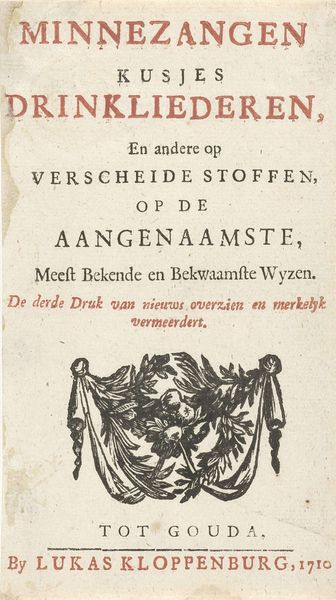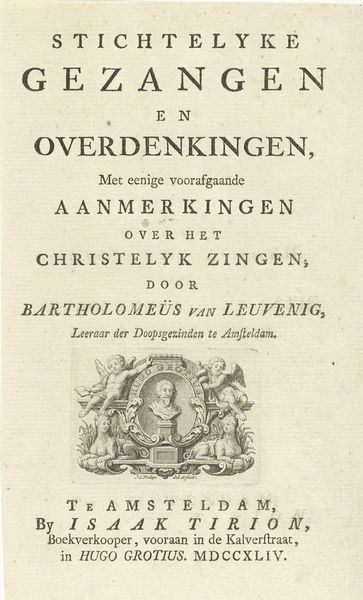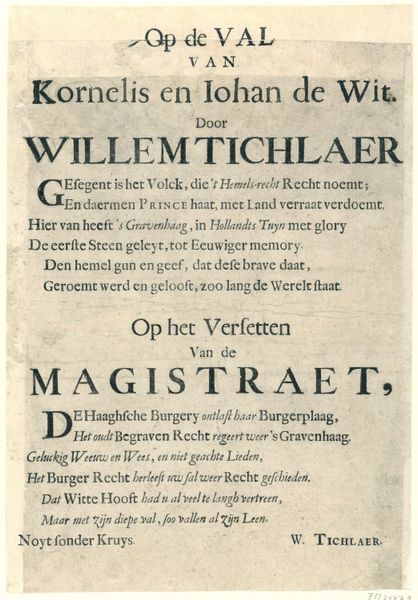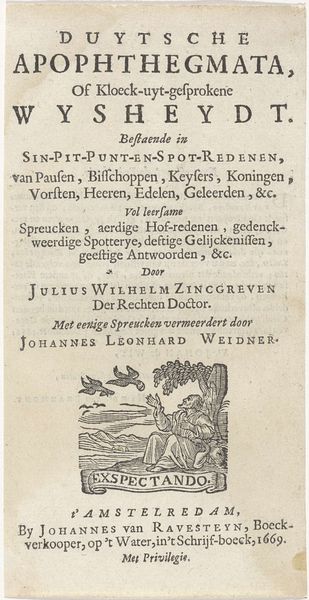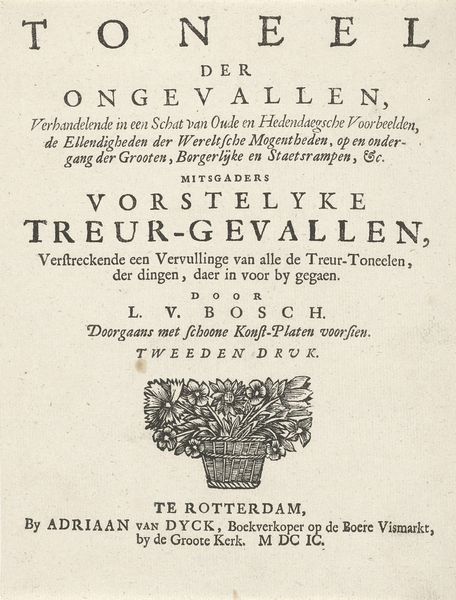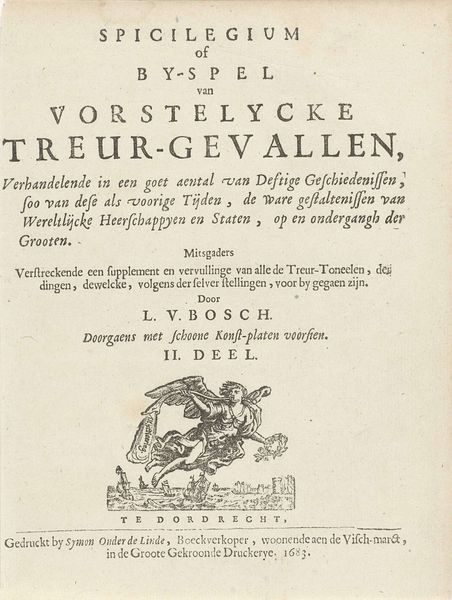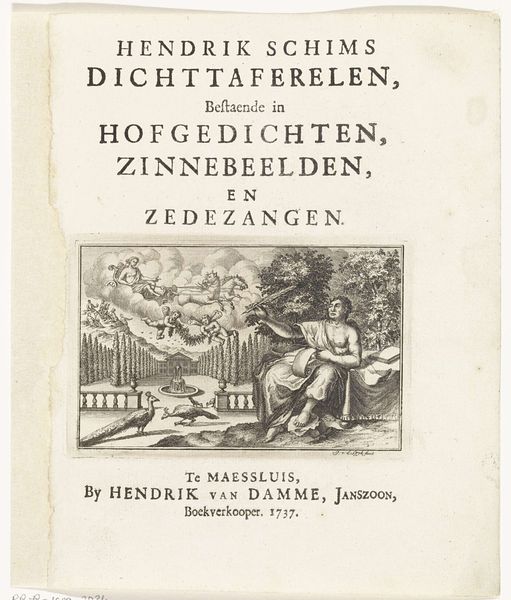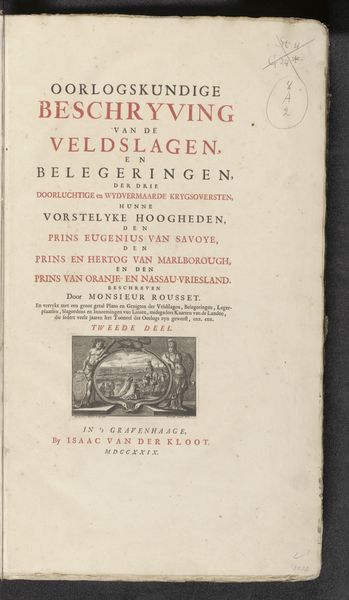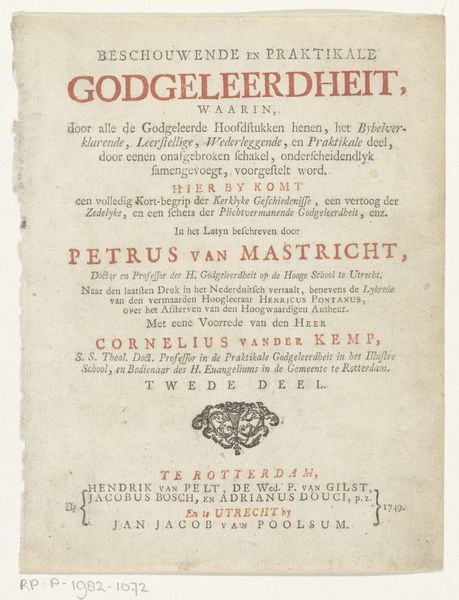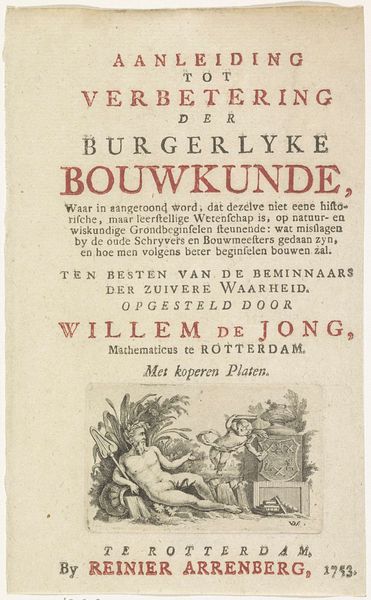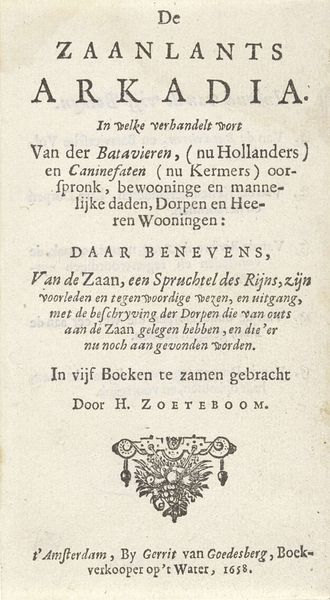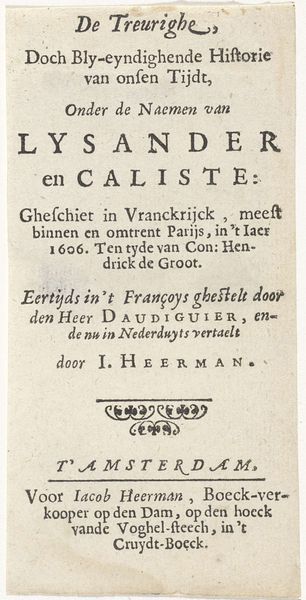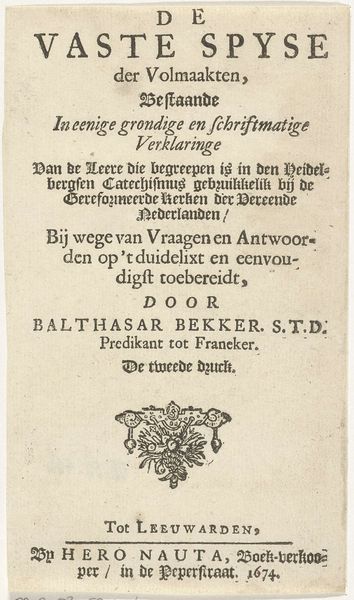
print, engraving
#
baroque
# print
#
figuration
#
history-painting
#
engraving
Dimensions: height 64 mm, width 113 mm, height 199 mm, width 148 mm
Copyright: Rijks Museum: Open Domain
Curator: This print, "Minerva en Mercurius met wapenschild" from 1725, credited to Clemens Nachtegaal, offers us an intriguing glimpse into the artistic conventions of the Baroque era. It’s a dense engraving filled with symbolism and classical allusions. Editor: It certainly is packed with imagery! I'm struck by the presence of both Minerva and Mercury, along with the armorial shield. How do you interpret the inclusion of these figures in relation to the history being represented? Curator: I’m interested in considering the broader sociopolitical climate of 18th-century Europe, particularly regarding knowledge production and patronage. Here, we have Minerva, goddess of wisdom and strategic warfare, alongside Mercury, the messenger god associated with commerce and communication. Given the print's dedication to Dominicus Roosmale, who was involved in the Province of Utrecht and known for his appreciation of poetry, what do you think the artist may have been trying to communicate? Editor: Maybe it suggests Roosmale's strategic intellect combined with his refined appreciation for the arts? That makes sense given Minerva’s association with strategy and Mercury with eloquence. Curator: Precisely! Think about the act of commissioning a print like this. It's a deliberate assertion of power, education, and social standing. These weren't merely decorative pieces; they were visual statements reinforcing hierarchies. How do we critically examine that dynamic? The choice of these gods could have multiple, nuanced intentions – praise for Roosmale and also Clemens trying to align himself and his skills to his benefactor's attributes and tastes, showing why he is the perfect engraver. Editor: That gives me a lot to think about. It's more than just pretty figures; it's about power dynamics and social messaging of the era! I see now how looking at historical context gives the print so much deeper meaning. Curator: Exactly, art becomes much more compelling when we understand its roots, don’t you think?
Comments
No comments
Be the first to comment and join the conversation on the ultimate creative platform.

